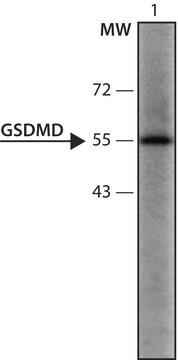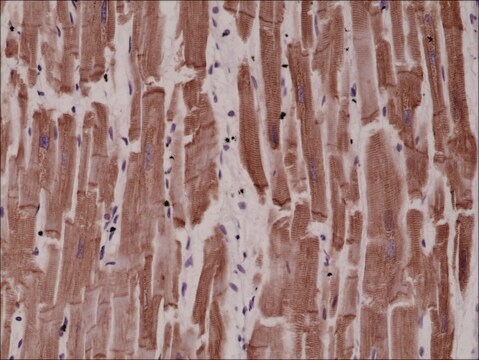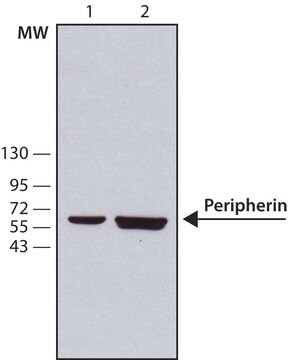C1862
Anti-Coilin antibody, Mouse monoclonal
~1.5 mg/mL, clone pδ, purified from hybridoma cell culture
About This Item
Productos recomendados
biological source
mouse
conjugate
unconjugated
antibody form
purified from hybridoma cell culture
antibody product type
primary antibodies
clone
pδ, monoclonal
form
buffered aqueous solution
mol wt
antigen ~80 kDa by SDS-PAGE
species reactivity
human
concentration
~1.5 mg/mL
technique(s)
immunocytochemistry: suitable
microarray: suitable
western blot: 1-2 μg/mL using HeLa nuclear extract
isotype
IgG1
UniProt accession no.
shipped in
dry ice
storage temp.
−20°C
target post-translational modification
unmodified
Gene Information
human ... COIL(8161)
General description
Specificity
Immunogen
Application
- immunoblotting
- immunocytochemistry
- cell microinjection
- fluorescence imaging
- indirect immunofluorescence
Biochem/physiol Actions
Physical form
Disclaimer
¿No encuentra el producto adecuado?
Pruebe nuestro Herramienta de selección de productos.
Storage Class
12 - Non Combustible Liquids
wgk_germany
nwg
flash_point_f
Not applicable
flash_point_c
Not applicable
Elija entre una de las versiones más recientes:
¿Ya tiene este producto?
Encuentre la documentación para los productos que ha comprado recientemente en la Biblioteca de documentos.
Nuestro equipo de científicos tiene experiencia en todas las áreas de investigación: Ciencias de la vida, Ciencia de los materiales, Síntesis química, Cromatografía, Analítica y muchas otras.
Póngase en contacto con el Servicio técnico






![2-[1-[(2RS)-2-(2,4-Dichlorophenyl)-2-[[(2,4-dichlorophenyl)methyl]oxy]ethyl]-1H-imidazol-3-ium-3-yl]-2-methylpropanoate certified reference material, TraceCERT®, Manufactured by: Sigma-Aldrich Production GmbH, Switzerland](/deepweb/assets/sigmaaldrich/product/structures/481/128/d91bd82f-cdfa-4c75-adf1-b832d5b28606/640/d91bd82f-cdfa-4c75-adf1-b832d5b28606.png)